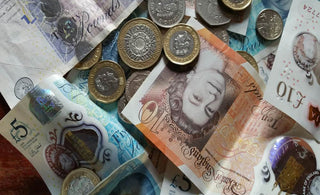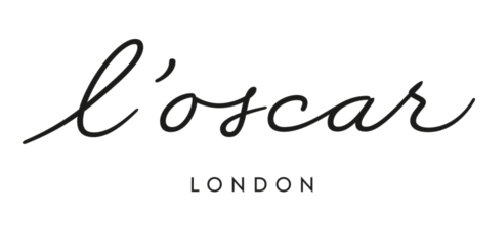
Investing pretty much always comes with some level of risk – but if you’re looking for higher returns, high-risk investments may be the best option.
But what are some of the best high-risk investments that offer high returns? That’s what we’ll be covering in this guide, so read on to find out.
Overview:
- High-risk investments can offer impressive returns but come with increased volatility and potential for loss.
- Popular high-risk options include cryptocurrency, penny stocks, angel investing, venture capital, and emerging art.
- Always conduct thorough research and diversify to manage risk.
- These investments are better suited to experienced investors with long-term goals and a high risk tolerance.
- You can invest in art with Grove Gallery – see our originals for sale here!
What is a High-Risk Investment?
High-risk investments are assets that have a higher chance of losing value but offer the potential for higher-than-average returns. These include volatile markets, unregulated products, or speculative opportunities.
Some factors that can make an investment high risk include:
- Market volatility
- Lack of liquidity
- Regulatory uncertainty
- Unproven business models
Learn all about Risk v Reward here.
High-Risk Return Investments: A Comparison
| Investment Type | Risk Level | Reward Potential | Liquidity | Expertise Needed |
|---|---|---|---|---|
| Cryptocurrency | Very High | Very High | High | High |
| Penny Stocks | Very High | High | Medium | High |
| Venture Capital | High | Very High | Low | Very High |
| Angel Investing | High | Very High | Low | Very High |
| Real Estate Flipping | High | High | Medium | Medium |
| Emerging Art | High | High | Low | Medium |
| Wholesaling | High | High | Medium | High |
Cryptocurrency
Chances are, you’ve heard about cryptocurrency in recent years – more and more people have begun investing in crypto, with around 560 million people around the world owning crypto in 2024.
Although investing in digital currencies such as Bitcoin and Ethereum has the potential for sky-high returns, it’s one of the riskiest investment choices on the market. This is partly due to regulatory uncertainties, and partly due to the crypto market’s extreme volatility – prices can skyrocket or crack within hours.
Some investors have become millionaires overnight, whereas others have experienced significant losses.
If you’re looking to invest in crypto, you’ll need a high tolerance for risk and a firm understanding of the market dynamics and technology used. Research blockchain technologies and diversify your holdings to manage risk.
Penny Stocks
Penny stocks are shares of small companies that trade for under £1 in the UK or $5 in the US Because of their low price, penny stocks can offer substantial returns – however, they can be incredibly volatile.
These stocks often fly under the radar, and their value can be influenced by market speculation, low trading volumes, or company news.
Some investors have made impressive profits by buying early and selling at the right time, but others have been caught out by rapid losses.
If you’re considering penny stocks, be prepared to do your research. Look into the company’s financials, check recent trading patterns, and understand that this kind of investing is high-risk and often short-term.
Venture Capital
Historically, venture capital was only an option for ultra-wealthy individuals and institutions. However, new platforms have made it more accessible to everyday investors with smaller buy-ins.
These funds invest in fast-growing startups with the aim of generating significant returns if the companies are acquired or go public.
While the potential gains can be impressive, returns often take years to materialise – and there’s no guarantee that the startups will succeed.
If you’re looking to invest in venture capital, make sure you understand the fund’s strategy, fees, and the kinds of businesses it supports. It’s a good option if you’re looking to spread risk across multiple companies, rather than backing a single startup.
Angel Investing
In 2025, there are more platforms than ever offering you the chance to invest in early-stage startups. Angel investing involves providing capital to a new business in exchange for equity.
The potential rewards can be huge – imagine getting in early on a company like Airbnb or Monzo! However, it’s also one of the riskiest investment choices out there. Many startups don’t succeed, and you could lose your entire investment.
If you’re looking to become an angel investor, always conduct thorough research on the team and idea – and accept that you might not see a return on your investment for several years. This kind of investment suits those with a long-term mindset and a strong appetite for risk.
Real Estate
There are several avenues you can take to invest in real estate, such as:
- Rental properties
- House flipping
- Real-Estate Investment Trusts (REITs)
Ultimately, the real estate market can be a great way to generate long-term, high returns. However, the real estate market is prone to fluctuations, and you could also lose money through unforeseen expenses, market fluctuations and property depreciation.
So, before investing in real estate, be sure to research property values, rental demand, and local market conditions.
Emerging Art
Unlike the stock market and other traditional investments, investing in emerging artists is a great way to combine passion with profit. When you buy early works from up-and-coming artists, there’s a chance they could rise in popularity – and your artwork could become highly valuable.
Of course, it’s not guaranteed. The art world can be unpredictable, and value is often subjective. That said, investors who spotted talents like Banksy early on have seen their investments grow dramatically.
If you’re looking to invest in emerging artists, focus on galleries that specialise in new talent. At Grove Gallery, we offer access to both emerging and established artists. Check out our collections of art for sale today!
Wholesaling
Wholesaling is when you find undervalued properties, secure them under contract, and then sell that contract to another buyer – and in most cases, you don’t actually purchase the property yourself.
It can be a quick way to turn a profit with low capital. However, wholesaling comes with its fair share of risks. Deals can fall through, local laws may restrict wholesaling activity, and without a strong network of buyers and sellers, it can be tough to find deals.
If you’re considering wholesaling, you’ll need strong negotiation skills, a firm understanding of your local property market, and the ability to act quickly. It’s a strategy that offers potential rewards, but only if you are willing to put in the groundwork.
Pros and Cons of High-Risk Investments
| Pros | Cons |
|---|---|
| Potential for high returns – Can significantly outperform safer investments | Greater chance of loss – You could lose part or all of your investment |
| Opportunity to build wealth quickly – Especially in fast-moving markets like crypto or startups | Market volatility – Prices can swing dramatically and unpredictably |
| Diversification – Can add balance to a long-term investment portfolio | Emotional stress – The ups and downs can be mentally draining |
| Access to innovative sectors – Such as tech, biotech, or emerging markets | Longer time horizon – It can take years to see returns (if any!) |
| Excitement and engagement – Often more dynamic than traditional investing | Requires more research and experience – Not ideal for beginner investor |
Mistakes to Avoid
- Investing without research – To avoid poor decisions, always research the market, the asset, and potential risks before committing any money.
- Following hype (especially on social media) – Just because an investment is trending doesn't mean it's a smart choice.
- Ignoring exit strategies – Always have a clear plan for when to sell or exit an investment. Know your limits - both for gains and losses.
- Overconcentrating your portfolio – Putting too much money into one asset or sector increases your exposure to risk. Diversify your portfolio to spread risk and protect your overall investment performance.
- Letting emotions dictate your decisions – Emotional reactions (like panic selling during a dip or FOMO buying during a surge) can sabotage your investment strategy. Make decisions based on logic, not emotion.
Are Any Investments 100% Safe?
In short, no - no investment is completely risk-free. Even the more conservative options carry a small degree of risk. For example, savings accounts and government bonds are seen as safe, but can still be affected by inflation, interest rate changes and currency fluctuations.
Some financial products, however, offer a higher level of protection. For example, in the UK, investments and savings held with regulated institutions may be protected under the Financial Services Compensation Scheme (FSCS). This means that if a bank, building society, or investment firm fails, the FSCS can compensate you (up to £85,000 per eligible person, per institution).
If you’re looking for a safe investment, you might consider options like:
- High-interest savings accounts (FSCS protected)
- Premium Bonds
- Government-backed bonds
- Diversified, low-risk investment funds
Whether you’re a seasoned investor or just starting to explore alternative assets, our experts here at Grove Gallery offer expert guidance and a curated selection of investment-grade art. Browse our art or check out our advisory page for personalised advice.
For anything else, call us on 020 8103 4905.






